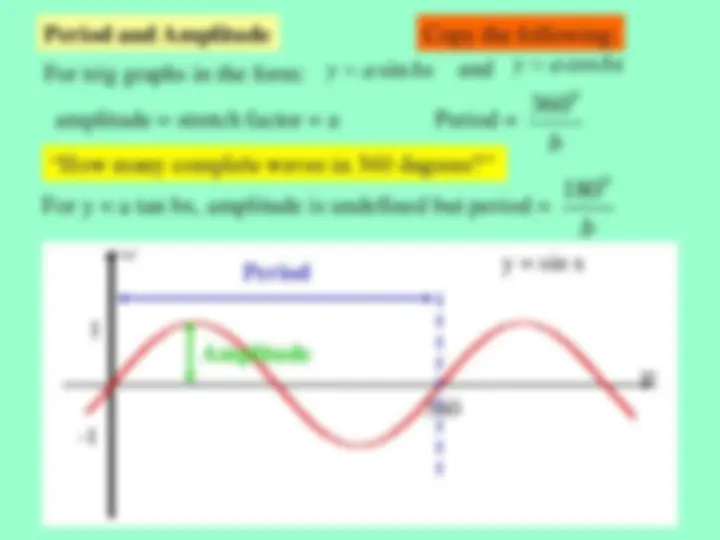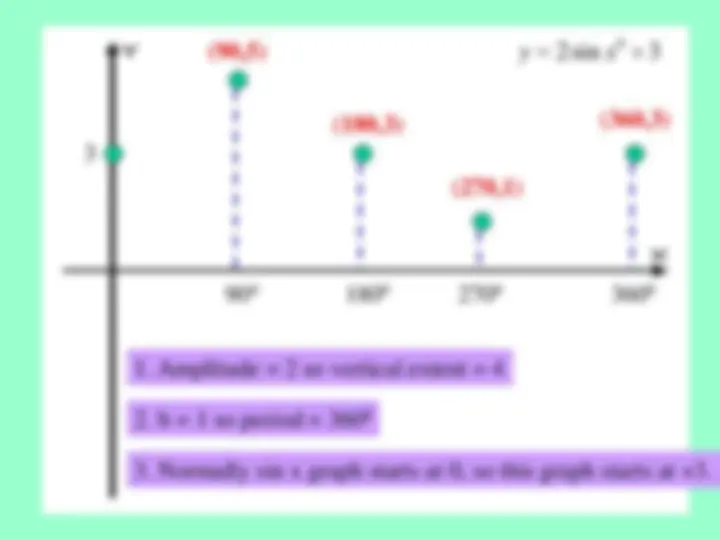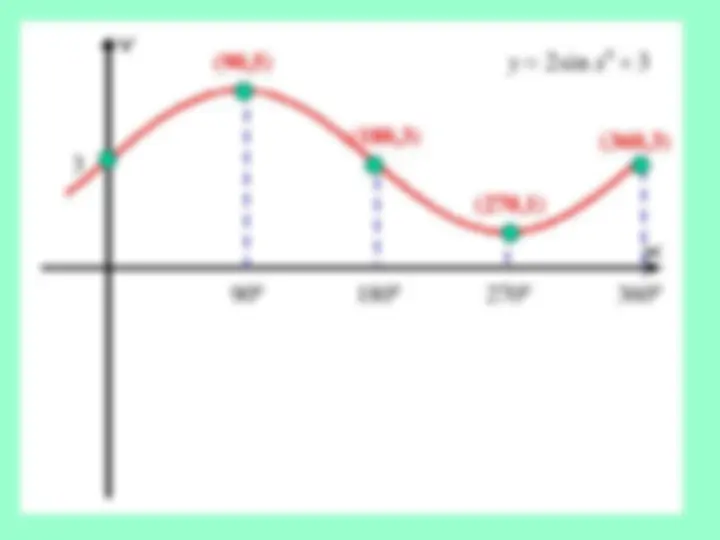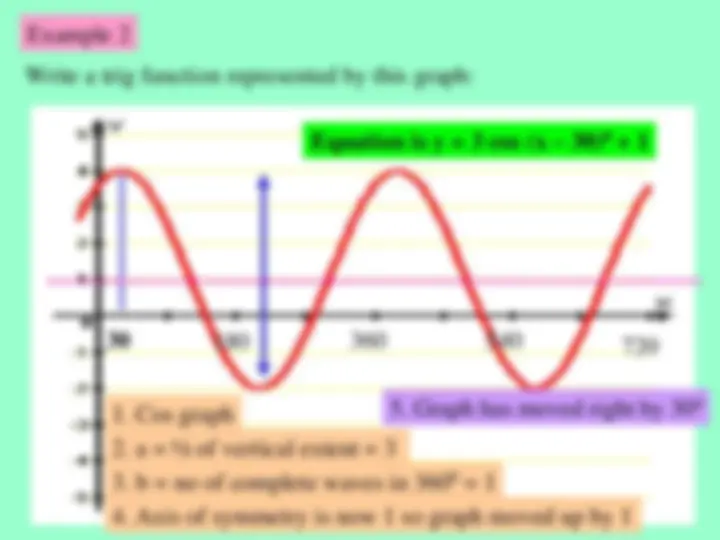








Study with the several resources on Docsity

Earn points by helping other students or get them with a premium plan


Prepare for your exams
Study with the several resources on Docsity

Earn points to download
Earn points by helping other students or get them with a premium plan
Community
Ask the community for help and clear up your study doubts
Discover the best universities in your country according to Docsity users
Free resources
Download our free guides on studying techniques, anxiety management strategies, and thesis advice from Docsity tutors
The concepts of period and amplitude in trigonometric graphs, using examples of sin and cos functions. It covers the rules for transforming trig graphs and provides exercises for practice.
Typology: Schemes and Mind Maps
1 / 11

This page cannot be seen from the preview
Don't miss anything!







Period and Amplitude A graph which consists of the same basic pattern repeated over and over is called periodic. The period is the horizontal coverage of the basic pattern. The amplitude of a graph is half of its vertical coverage. y = sin x 360
Period Amplitude
Heinemann, p.53, EX 4A (ORALLY)
Graphing trig functions Recall the rules for transforming graphs. The same rules apply for trig graphs:
Example 1 Sketch and annotate the graph of 0
Solution: Graphing trig functions
0
0 180 0
0
0
Example 2 Write a trig function represented by this graph: (^30) 180 360 540 720
Heinemann, p.54, EX 4B Q1 & Q